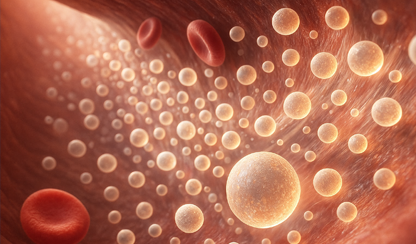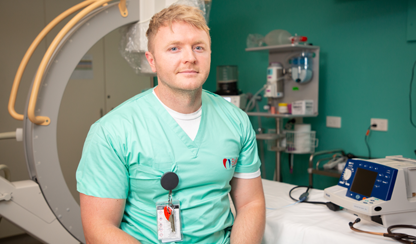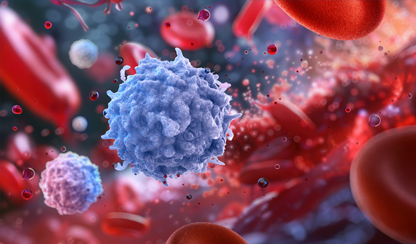10 June 2020
Media release
New report sounds alarm on cholesterol complacency among high-risk heart patients
The first new cholesterol data in a decade reveals that almost half of those most at risk of cardiovascular disease (CVD) are failing to adequately control cholesterol.i The findings are further evidence that the management of CVD is far from solved.
Baker Heart and Diabetes Institute has today released its analysis of the first new Australian cholesterol data in general practice in nearly a decade. The report, launched virtually to our nation’s Federal MPs, paints a worrying picture of the LDL (‘bad’) cholesterol levels among those who have experienced a cardiovascular event and who are most at risk of another event.
Code Red: overturning Australia’s cholesterol complacency examined data over a ten-year period from 2010 of 107,000 Australians who have experienced a cardiovascular event. The report shines a light on an issue that should be a priority on the nation’s health agenda — elevated cholesterol among high-risk Australians. Code Red was supported by an unrestricted educational grant from Amgen Australia.
“With this study, we were shocked to find that 48 per cent of Australians living with CVD are not reaching national guideline-recommended targets for LDL (‘bad’) cholesterol,” Baker Institute Director and report co-author, Professor Tom Marwick said. “This means that over the past decade, more than one in three Australians who have CVD are vulnerable to further cardiovascular events that could result in greater disability or death.
“These findings should reignite action, and make clear that greater understanding is needed of the issues facing Australia’s heart patients, along with more intensive management of cholesterol in high-risk patients. We can, and should, do more for these vulnerable Australians.”
CVD remains the leading cause of death in Australia and is one of the biggest burdens on the nation’s health budget. Too much cholesterol can clog the arteries supplying blood to the heart and other parts of the body and result in a heart attack or stroke.i Yet every 1 mmol/L reduction in LDL (‘bad’) cholesterol reduces the risk of a major vascular event by approximately 20% after around five years of taking statin medication.1, 3
The Baker Institute’s Head of Preclinical Disease and Prevention and report lead author, Associate Professor Melinda Carrington said the report also uncovered a disturbing gender imbalance that should be closely examined.
“In this study, not only did Australian women record higher levels of LDL or ‘bad’ cholesterol than men, but 56% were not meeting the optimal target of 1.8 mmol/L compared to just 42% of men,” Professor Carrington said.
Alarmingly, Code Red also found that 58% of Australians who had experienced a more recent CVD event within the last five years did not achieve target LDL (‘bad’) cholesterol levels — suggesting this group is not being treated quickly or intensively enough.
Each year, around 57,000 Australians suffer a heart attack, and each day, on average, 20 Australians die from a heart attack.4 Within 12 months, one in 10 heart attack survivors will have another heart attack.5
Similarly, in 2017 there were more than 56,000 new and recurrent strokes in Australia — that is one stroke every nine minutes.6 Within three months, nearly 1 in 5 people (18%) who have experienced a stroke will have another stroke.7
Professor Marwick said the report called for a dramatic shift in our complacency towards cholesterol management.
“The findings in Code Red demonstrate a systematic and stepped care approach is needed to reform cholesterol management, in a way that unites the sector — from policy and political decision-makers, to the manufacturers, as well as the patient, clinical, and advocacy communities.
“Greater education for both GPs and patients about the importance of treating to target and intensifying treatment to achieve the target goals for secondary prevention of CVD is crucial,” he said.
“We also need a system redesign in hospitals to focus on secondary prevention, easier access to additional cholesterol medication for patients on statins, acceptance of risk stratification in secondary prevention to identify how best to target those at the highest risk, and wider access to a new class of medication (PCSK9 inhibitors).
This requires a focus not just on primary care but the whole healthcare system. “Action on cholesterol, particularly among Australians at high-risk of subsequent events, must be a key pillar of such reform.”
“If we act now to better manage those who have already experienced at least one heart event, 3738 lives could be saved and 13,740 heart attacks or strokes avoided over the next five years. At the same time, avoidance of further crises could save the nation up to $66.6 million.”1
Key report findings:
- 79% of Australians examined as part of this report were prescribed the recommended lipid-lowering therapy.1
- But almost half (48%) of high-risk Australians managed in primary care are not meeting the recommended targets for ‘bad’ cholesterol, leaving them at risk of further heart events, disability, or death.1
- A higher proportion of those with a sub-optimal LDL-C or ‘bad’ cholesterol were women (56%), had cerebrovascular disease (58%), and had a more recent CVD event within the last 5 years (58%).1
- Over the past decade, the number of Australians not reaching the treatment targets for LDL-C or ‘bad’ cholesterol has remained steady (56% in 2010 compared to 52% in 2019). In any year, LDL-C was higher for women than men.1
- New modelling reveals more than 3738 lives could be saved and over 13,740 CVD events prevented over the next five years with optimal cholesterol management.1
- Over the next five years, $66.6 million in healthcare costs could be saved with intervention to achieve optimal LDL-C targets.1
References
- Carrington MJ, Cao T, Haregu T, Gao, L, Moodie M, Yiallourou SR and Marwick T. Code Red: overturning Australia’s cholesterol complacency. February 2020, Baker Heart and Diabetes Institute, Melbourne, Australia
- Carrington MJ, Cao T, Haregu T, Gao, L, Moodie M, Yiallourou SR and Marwick T. Code Red: overturning Australia’s cholesterol complacency. February 2020, Baker Heart and Diabetes Institute, Melbourne, Australia
- Baigent C, Blackwell L, Emberson J, Holland LE, Reith C, Bhala N, et al. Efficacy and safety of more intensive lowering of LDL cholesterol: a meta-analysis of data from 170,000 participants in 26 randomised trials. Lancet 2010;376(9753):1670-81
- Heart Foundation, www.heartfoundation.org.au
- Baker Heart and Diabetes Institute. No Second Chances: controlling risk in cardiovascular disease. https://www.baker.edu.au/-/media/documents/impact/baker-institute_no-second-chances.pdf. 2019
- Stroke Foundation. Facts and Figures about stroke. https://strokefoundation.org.au/about-stroke/facts-and-figures-about-stroke. Accessed March 2020.
- Baker Heart and Diabetes Institute. No Second Chances: controlling risk in cardiovascular disease. https://www.baker.edu.au/-/media/documents/impact/baker-institute_no-second-chances.pdf. 2019
For further information or to organise interviews please contact:
Tracey Ellis
T: 03 8532 1514
M: 0433 781 972
E: tracey.ellis@baker.edu.au





